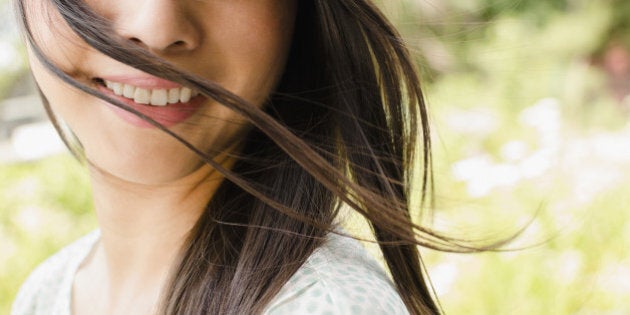
I always knew that dash was there -- that small, always overlooked, but part of me dash. It was there when my parents would give me red pockets and I didn't know what it meant; it is there when I'm trying to speak to my relatives in broken Chinese filling in every other word with a Chinese-accented English word; it is evident when I attend weddings and am apart of the tea ceremony, and carry on robotically as I am instructed to place a dry date in each cup.
It is moments like those, during weddings and events, that I act based on old traditions, but remain disconnected from the significance of the customs. How are these connected to me? Why is red such an important colour? What is the story behind serving tea to my elders at a wedding? What is the true implication of the double happiness symbol embedded on so many items?
There is often a disconnect between the two selves: our ethnicity and where we are born, whether you are Chinese-Canadian, Indian-Canadian, Italian-Canadian, African-Canadian, etc. Your ethnicity is the very essence of who you are, who your children will be, and who your grandchildren will be -- while being Canadian may change from one generation to the next.
So, what does that dash mean?
I didn't know that question was one that needed to be answered until I began working with my team at Palettera this fall to curate a cross-cultural art exhibition at the Shangri-La. How could I have gone so long without exploring my cultural identity?
Should we choose to embrace our traditions, or let them fade?
The answer to that for me is easy. I choose to embrace them because I want that left side of the dash to remain part of who I am, and as I continue on each year commemorating these events and attending weddings of my culture, I want to be celebrating them whole-heartedly and meaningfully.
Our identity is based on traditions, as we take on new ones and build upon old ones. If we cut them off completely, and don't take the time to educate ourselves with their history, where they were born, why they were born, then a huge part of our identity is lost and the dash in between will be a bridge to nothing. I'm eager to discover what that something is.
To say the least, I am extremely thrilled for the art exhibit called Fête Chinoise. Guests will have a chance to walk through nine installations and spaces, including The Tea Room, Summer Palace Park, The Photo Salon, The Red Rooms, Porcelain Garden, the Marketplace, and Dim Sum Cocktail Hour in the Dai Pai Dong. These themes have been such important staples in Chinese culture and yet, the meaning of them have been lost and washed out, and I, for one, am really excited to find out more about what that tiny and significant dash truly means.
(If you can relate, please feel free to leave a comment or your email below. I would love to hear what you think and discuss these ideas with you!)
MORE ON HUFFPOST:
